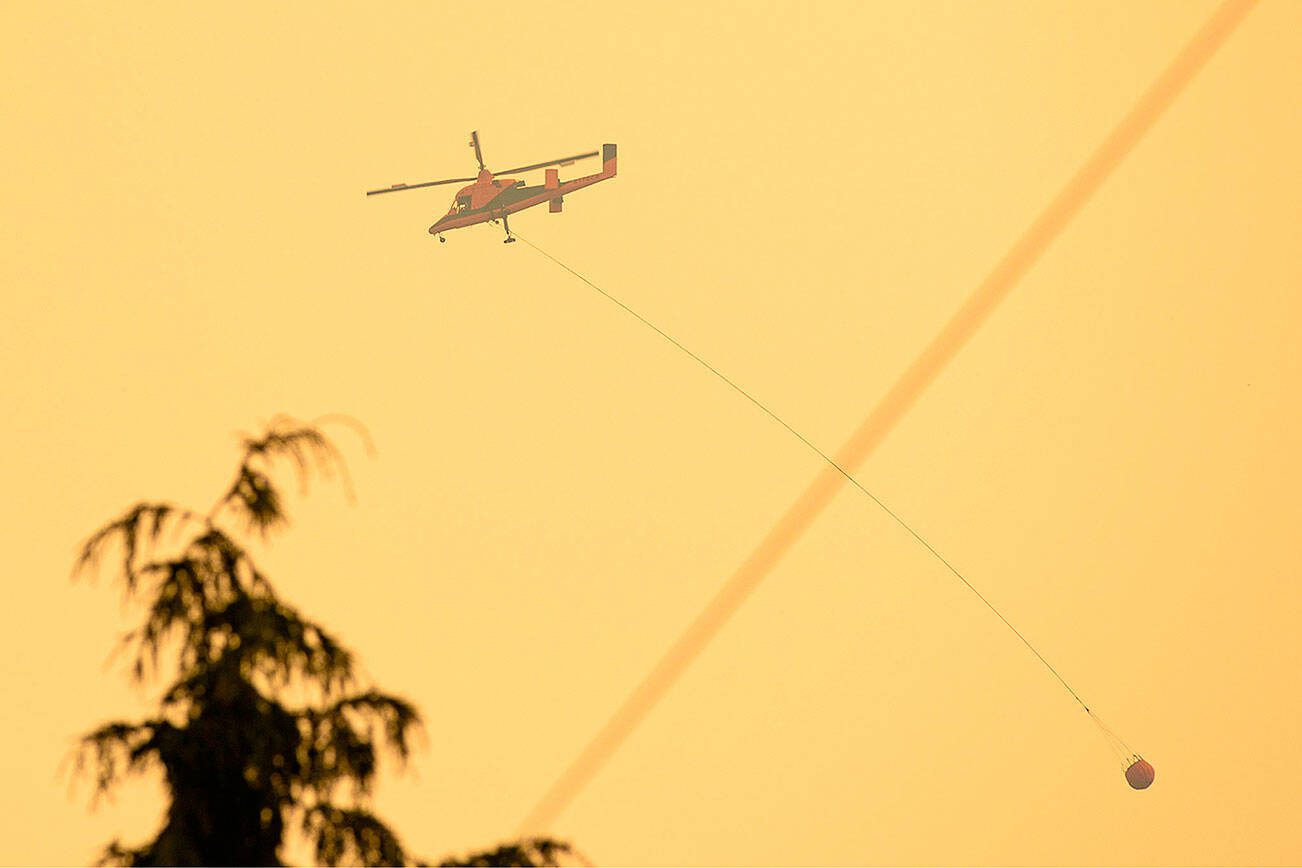EVERETT — With a forecasted hot and dry summer fueling a worrisome wildfire season, Kirk Troberg has some advice for property owners to better defend themselves against fire.
Troberg, a community resilience coordinator for the state Department of Natural Resources, oversees seven western Washington counties, working with conservation districts, emergency management departments and landowners to help people prepare for wildfires. He also helps manage his area’s Firewise USA programs, a fire and safety program created by the National Fire Protection Association.
Through Firewise, Troberg and other DNR coordinators work on a neighborhood scale to help communities become more resilient to potential wildfire hazards. To participate in the program, a neighborhood must create a board of three people, with one person identifying as a resident leader. Troberg said many groups he’s worked with incorporate the board into already existing housing associations or other neighborhood committees.
Then Troberg or someone from the local conservation district creates a free risk assessment of the neighborhood, which the community uses to create an action plan.
To continue in the program, communities must contribute “the amount of one volunteer hour per participating dwelling in either time or money every year,” Troberg said, adding that it sounds more complicated in instruction than reality.
In Washington, the value of one “volunteer hour” is $33.49. For a group of 10 houses, the community must either spend $334.90, using funds to contract cleanup crews, renting maintenance equipment, etc., or spend 10 hours volunteering in the neighborhood in ways that reduce wildfire risk.
On June 1, the National Interagency Fire Center released an update of wildland fire potentials for the country. Collected data predicts above normal temperatures across the U.S. through September, with the U.S. Drought Monitor continuing to show moderate drought since the end of April in the Washington Cascades and Puget Sound region.
The most important advice, Troberg said, is to clean off roofs and gutters and make sure a 5-foot buffer surrounding your house is as clear of flammable material as possible. Beyond that immediate buffer, you should make sure ladder fuels — such as dead vegetation on the ground that could assist fires jumping to the canopy — are cleared out, he said.
“When houses burn down in a wildfire event, the source of ignition is embers, not the fire front getting all the way to the house and then it catching on fire,” Troberg said. “If you can eliminate sources of embers within 100 feet from your house, you give yourself a great shot” of protecting your house.
Eliza Aronson: 425-339-3434; eliza.aronson@heraldnet.com; X: @ElizaAronson.
Eliza’s stories are supported by the Herald’s Environmental and Climate Reporting Fund.
Talk to us
> Give us your news tips.
> Send us a letter to the editor.
> More Herald contact information.

























